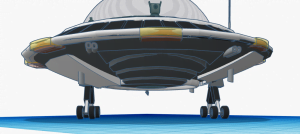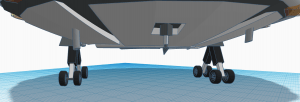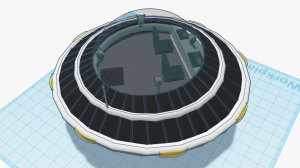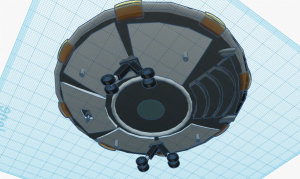Registrations are closed
In the future, to enable astronauts to stay on the Moon for long periods of time, new infrastructures must be developed to overcome important challenges. Such challenges include protection from radiation and meteorites, energy production, the extraction and recycling of water, food production and much more. The Moon Camp Challenge invites students to explore the Moon and decode some of the complexities future astronauts may face.
In Moon Camp Discovery each team’s mission is to 3D design only one component of a Moon Camp using Tinkercad. Teams can choose to design a:
– Lunar lander
– Moon Base
– Lunar rover
– Rocket
– Lunar Orbital Space Station
The design should be adapted to the Moon environment and if possible consider the use of local resources, provide protection and/or living and working facilities for the astronauts.
Moon Camp Discovery is a non-competitive mission for beginners. All teams that submit an entry that complies with the guidelines will receive a participation certificate and their project will be shared on the Moon Camp online platform.
Who can participate?
Participation is open worldwide to students aged up to 19 years old. Moon Camp Discovery is recommended for students aged 6 to 14 years old. Participating students must be supported by a teacher, educator or parent.
Discovery Projects Gallery 2020-2021
Below you can find some of the Moon Camp Discovery projects. For more projects visit the Moon Camp Discovery project gallery.
Team: satellite
Edipsos Greece Category: Lunar lander
External link for Tinkercad 3D design
I designed a spacecraft whose main space is the cockpit to transport two astronauts who pilot the vehicle. This space is covered with a special hemispherical crystal that provides protection from space radiation, ensuring panoramic views, which is very useful in order to have the complete control of the surrounding space. At the back of the cockpit there is a step-down entrance-exit staircase.
The vehicle will be able to move either with the four double wheels which will have independent movement each to give it greater possibilities of movement on the uneven lunar ground, or with the 6 turbines that will take it off and land it and move it into space environment. The four of them are located on the lower surface of the vehicle and serve mainly for landing and take-off while the other 2 in the rear to push the take-off vehicle forward. Below the cockpit, in addition to the mechanical parts, there is a fuel storage tank which is fueled by the lunar base.In addition to these fuels, additional energy is stored for use by the photovoltaic panel that circularly surrounds the cockpit on the upper surface of the vehicle forming a ring. The vehicle has a drill with which we will collect soil-rock samples etc for research and experimentation. It also has five video cameras of the surrounding area, one of which is located on the lower surface of the vehicle for the purpose of video recording of the space under the vehicle as well as the monitoring and operation of the drilling rig. For the needs of movement on the dark side of the moon, it has 8 low-energy technology headlights around the perimeter of the vehicle and on the middle ring that separates the upper and lower part. Finally, the communication with the lunar base will be done with antenna-reception – data transmission.





















